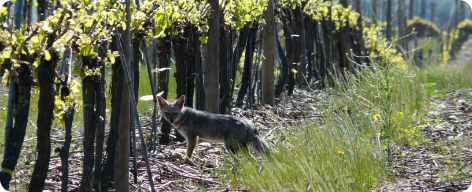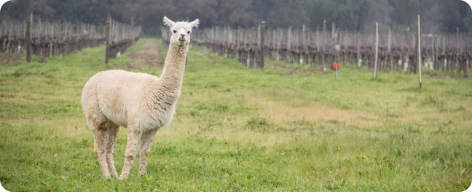

From the use of harvest waste to the collaboration of animals in soil preparation; this is how a winery works, respecting nature’s processes, while using them in our favor.
In the blog “How to Identify an organic winery,” we saw that healthy soils, biodiversity, and old vines…

Just as the Recycle Now site explains, some of the advantages of making compost include the reduction of spending and use of other resources, as you can improve the quality of the soils with waste generated in your field or garden, and therefore, reduce your environmental impact.
In an organic winery like Veramonte, we use our organic waste from harvest (like grape skin and seeds), together with manure from the local area to create compost. This is then applied in the vineyard to improve the biodiversity of the soils.
In fact, if you’d like to copy this process in your home, it’s an easy idea. The wine site Wine Cooler shows us how wine and beer can be great additions to your other organic waste.
They are:
– Good activators for decomposition
– Accelerators (especially since they don’t have a long decomposition process)
– Able to replace water
– Allow dry materials to incorporate (like sawdust)
– Able to be used abundantly

Planting between Rows
This is a kind of planting that, just as the site Horticultor.es explains, is a style of planting that involves seeding in grooves made in the earth.
The objective is to improve the structure of the soil, minimize erosion, and add nutrients. It also allows seeds to be planted in rows, without overcrowding, meaning increased production and more efficient use of space.

You might be more familiar with the idea of pruning, but maybe not with canopy. This refers to the leaves of the plant, so in a tree, this is known as the crown. Just as La cata del vino explains, managing the canopy is a technique whose objective is to help the grape to reach its ideal ripeness and improve the quality of the grapes. In other words, it’s reaching the precise physiological maturity and sugar levels. And how? Having the correct amount of foliage allows for increased ventilation that helps reduce pests and other diseases.

You must remember that all of the care a winery takes with its soils are always with the objective of producing a high-quality wine. Why? Preserving native forests and canyons means caring for the insects that live there, as they are a vital part of the natural processes that allow us to have a healthy and abundant harvest. This means avoiding the majority of chemical additives in the vineyards.

Although it might seem odd, animals play an important role in the process of organic winemaking. In Veramonte’s case, our sheep are excellent helpers. What do they do? They fertilize the soil, cut the grass in spring, and compact and aerate the soils with their hooves as they walk among the vines.
The cycle of an organic winery allows space for all of the natural process to occur. Each of the items mentioned in this process improve the winemaking process and the quality and character reflected in the soils. This all means that using chemical products can complete annihilate the personality of the wine.
{{cta(’87e62002-336d-4d8d-b07e-daeec80c79ef’)}}